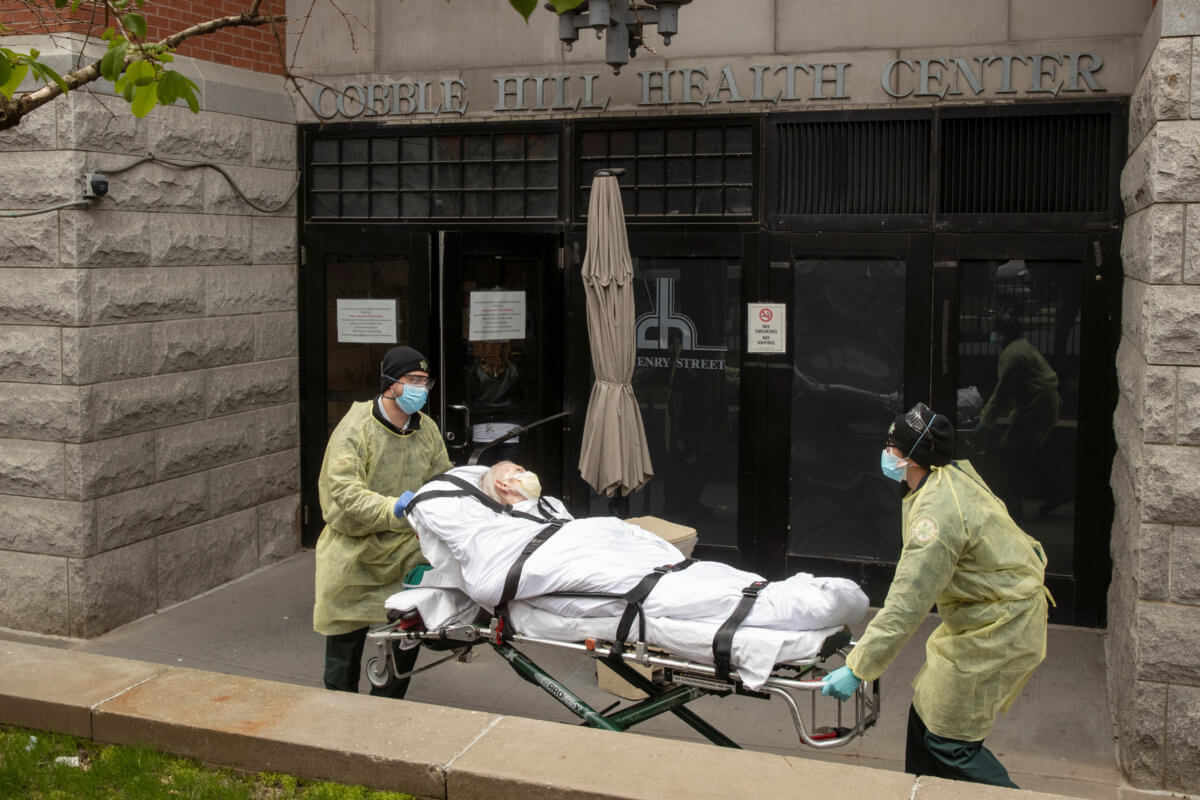 The Clove Lakes Health Care facility on Staten Island, rated five stars, reported only 15 out of 72 serious falls between 2011 and 2015.
The Clove Lakes Health Care facility on Staten Island, rated five stars, reported only 15 out of 72 serious falls between 2011 and 2015.Olga Ginzburg for The New York Times
Twelve years ago, the U.S. government introduced a powerful new tool to help people make a wrenching decision: which nursing home to choose for loved ones at their most vulnerable. Using a simple star rating — one being the worst, five the best — the system promised to distill reams of information and transform an emotional process into one based on objective, government-blessed metrics.
The star system quickly became ubiquitous, a popular way for consumers to educate themselves and for nursing homes to attract new customers. During the coronavirus pandemic, with many locked-down homes unavailable for prospective residents or their families to see firsthand, the ratings seemed indispensable.

Jessica Ebelhar for The New York Times
But a New York Times investigation, based on the most comprehensive analysis of the data that powers the ratings program, found that it is broken.
Despite years of warnings, the system provided a badly distorted picture of the quality of care at the nation’s nursing homes. Many relied on sleight-of-hand maneuvers to improve their ratings and hide shortcomings that contributed to the damage when the pandemic struck.
More than 130,000 nursing-home residents have died of Covid-19, and The Times’s analysis found that people at five-star facilities were roughly as likely to die of the disease as those at one-star homes.
The ratings program, run by the U.S. Centers for Medicare & Medicaid Services, relies on a mix of self-reported data from more than 15,000 nursing homes and on-site examinations by state health inspectors. Nursing homes receive scores based on how they fare in those inspections; how much time nurses spend with residents; and the quality of care that residents receive. Those three grades are then combined into an overarching star rating for each nursing home.

Ty Wright for The New York Times“I think about how much better I’d be if I had never gone there,” said Ms. DeVito, 78, a retired paralegal.
To evaluate the ratings’ reliability, The Times built a database to analyze millions of payroll records to determine how much hands-on care nursing homes provide residents, combed through 373,000 reports by state inspectors and examined financial statements submitted to the government by more than 10,000 nursing homes.
The Times obtained access to portions of the ratings data that aren’t publicly available from academics who had research agreements with the Centers for Medicare & Medicaid Services, or C.M.S.
Among The Times’s findings:
Much of the information submitted to C.M.S. is wrong. Almost always, that incorrect information makes the homes seem cleaner and safer than they are.
Some nursing homes inflate their staffing levels by, for example, including employees who are on vacation. The number of patients on dangerous antipsychotic medications is frequently understated. Residents’ accidents and health problems often go unreported.
In one sign of the problems with the self-reported data, nursing homes that earn five stars for their quality of care are nearly as likely to flunk in-person inspections as to ace them. But the government rarely audits the nursing homes’ data.
Data suggest that at least some nursing homes know in advance about what are supposed to be surprise inspections. Health inspectors still routinely found problems with abuse and neglect at five-star facilities, yet they rarely deemed the infractions serious enough to merit lower ratings.
At homes whose five stars masked serious problems, residents developed bed sores so severe that their bones were exposed. Others lost the ability to move.
But the most important impact may be that the nursing home industry was ill equipped for the pandemic. The rating system allowed facilities to score high grades without upgrading the care they provided.
“They were working to improve their ratings, but not their quality,” said Charlene Harrington, who sits on a board that advises C.M.S. on the ratings system.
“The problems with the five-star system left these homes less prepared in the pandemic,” she said. “They were allowed to not have enough staffing, and they were allowed to ignore infection-control deficiencies, so they had poorer quality than the public knew about, and they were in the worst position to manage Covid.”


 Correction officers in New York City live in fear of bringing the virus home to families. They say the city has not protected them.
Correction officers in New York City live in fear of bringing the virus home to families. They say the city has not protected them. More than 160 inmates and 130 staff members at the Rikers Island jail complex have been infected with the virus.Credit...Todd Heisler/The New York Times
More than 160 inmates and 130 staff members at the Rikers Island jail complex have been infected with the virus.Credit...Todd Heisler/The New York Times Coronavirus ‘does not spread easily’ on contaminated surfaces: CDC
Coronavirus ‘does not spread easily’ on contaminated surfaces: CDC
 Cuomo: Westchester to reopen Tuesday as COVID-19 deaths drop below 100 for first time since March
Cuomo: Westchester to reopen Tuesday as COVID-19 deaths drop below 100 for first time since March








